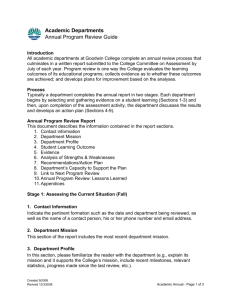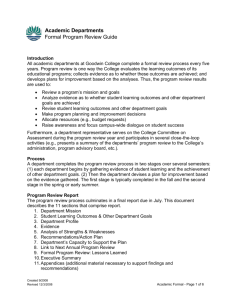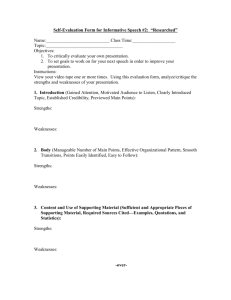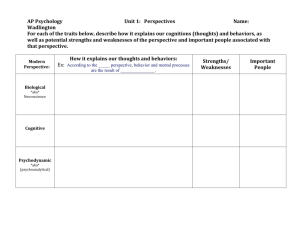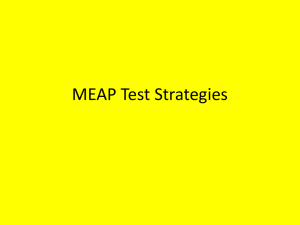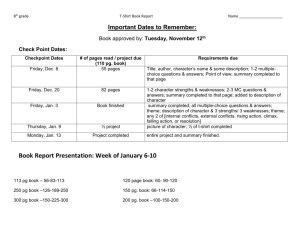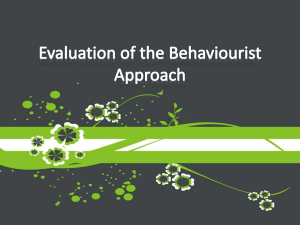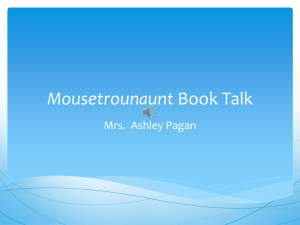Formal Program Review Guide
advertisement
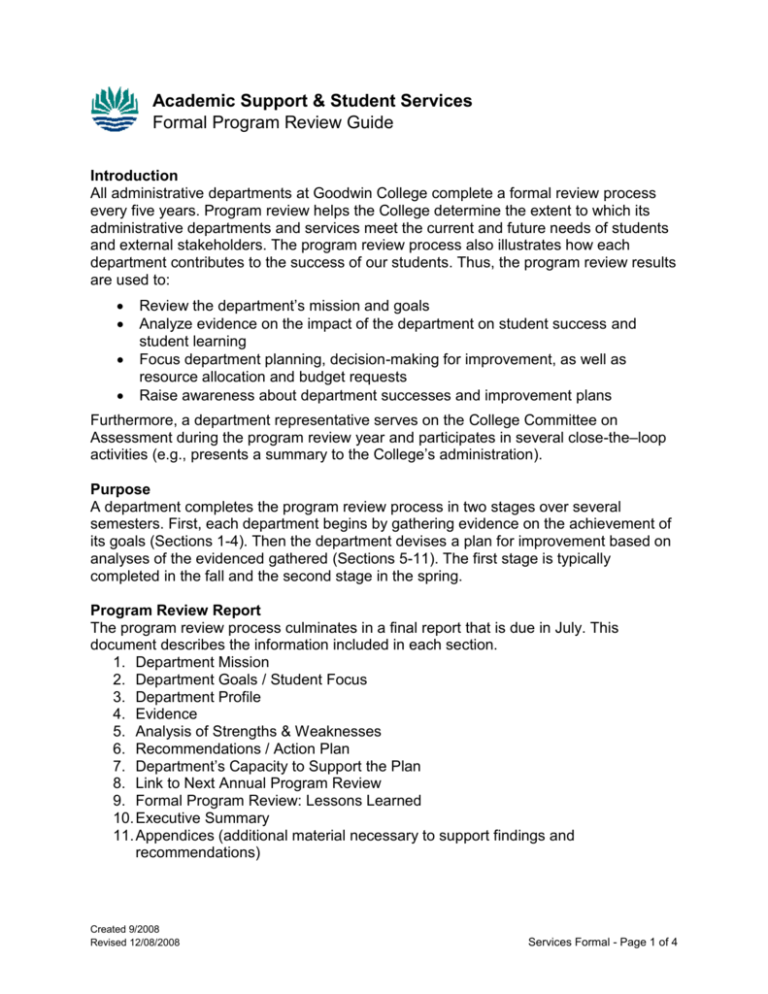
Academic Support & Student Services Formal Program Review Guide Introduction All administrative departments at Goodwin College complete a formal review process every five years. Program review helps the College determine the extent to which its administrative departments and services meet the current and future needs of students and external stakeholders. The program review process also illustrates how each department contributes to the success of our students. Thus, the program review results are used to: Review the department’s mission and goals Analyze evidence on the impact of the department on student success and student learning Focus department planning, decision-making for improvement, as well as resource allocation and budget requests Raise awareness about department successes and improvement plans Furthermore, a department representative serves on the College Committee on Assessment during the program review year and participates in several close-the–loop activities (e.g., presents a summary to the College’s administration). Purpose A department completes the program review process in two stages over several semesters. First, each department begins by gathering evidence on the achievement of its goals (Sections 1-4). Then the department devises a plan for improvement based on analyses of the evidenced gathered (Sections 5-11). The first stage is typically completed in the fall and the second stage in the spring. Program Review Report The program review process culminates in a final report that is due in July. This document describes the information included in each section. 1. Department Mission 2. Department Goals / Student Focus 3. Department Profile 4. Evidence 5. Analysis of Strengths & Weaknesses 6. Recommendations / Action Plan 7. Department’s Capacity to Support the Plan 8. Link to Next Annual Program Review 9. Formal Program Review: Lessons Learned 10. Executive Summary 11. Appendices (additional material necessary to support findings and recommendations) Created 9/2008 Revised 12/08/2008 Services Formal - Page 1 of 4 Stage 1: Assessing the Current Situation 1. Department Mission The cover page should include the date, department under review as well as a contact person’s name, phone number and email address. Then, the first section describes the department’s mission and how it is aligned with the College’s mission. Focus on how the department’s mission supports student learning and success. Furthermore, this section and the next section provide the reader insight into where the department wants to be and what it plans to accomplish. 2. Department Goals / Student Focus In this section, identify the department goals that are the focus of this review. This section should also make explicit the indirect links between the goals and student learning and success. 3. Department Profile This section addresses the recent history of the department. The section should be succinct and provide the background information necessary for understanding the goals listed above and the department’s current situation. For example, you might address: Organizational structure Customers Key facts and statistics Notable events & accomplishments Vision for the future 4. Evidence This section presents and summarizes data that already exists and your plans for collecting additional evidence as part of this program review. Evidence can come from the most recent external review, data that is already collected by the college, or an assessment activity you design specifically for this formal program review. A. Existing Evidence Present and summarize existing evidence that you can use to answer the questions, “To what extent are we achieving our goals? How do we know?” For example, Example: Number & type of student complaints Example: Results of new student survey C. Additional Evidence to be Gathered / Planned Assessment Activities What additional evidence needs to be gathered? Goals Created 9/2008 Revised 12/08/2008 Measures Timeline Services Formal - Page 2 of 4 Stage 2: Planning for Change/Improvement (Spring) To complete the second stage, the department analyzes the information recorded above, identifies strengths and weaknesses, makes recommendations, designs a related action plan, and evaluates the capacity of the department to support the plan. This information is recorded in the remaining sections of the report that is usually completed during the spring or early summer. 5. Analysis of Strengths & Weaknesses This section answers the question, “How well are we doing?” As a department, discuss and evaluate the results of the data presented in the previous sections. Describe when the discussion took place, who participated and what you discovered is working and not working? 6. Recommendations / Action Plan In this section, answer the question, “What do we want to work on to better achieve our department’s goals (and that may include building on strengths or addressing weaknesses)? Describe 1-3 actions the department plans to undertake. For each action, indicate who is responsible, and give a timeline for action. Action Reason why you selected this action (link to evidence) Who is responsible? Timeline for action How will we know whether this action has achieved its intended goal? 7. Department’s Capacity to Support the Plan In this section, evaluate the capacity of your department to achieve your goals; especially your action plan. For example, summarize information about your staff, technology, space and other resources. A. Staff Resources Describe the staffing complement for the department. Number Education Relevant characteristics, accomplishments/milestones B. Technology, Space & Other Resources Describe how the department uses technology to improve its operations. How does it stay current? How well does the existing space configuration meet the department’s needs? What reallocation or renovation could be done to aid the department in accomplishing its goals? Resource Created 9/2008 Revised 12/08/2008 Description Strengths Weaknesses Services Formal - Page 3 of 4 C. Budget Adequacy Provide a summary of budget allocations and expenditures. What is the decisionmaking process for the distribution of funds? Should the department make adjustments so that it may operate more efficiently? Prior Year Current Year Total Revenues Total Expenses Net Income Is the budget adequate to meet department’s needs? __ Yes __ No, please explain: D. Additional Resources Needed for Action Plan Give a realistic estimate of the additional internal and external resources needed to support the department’s action plan. 8. Link to the Next Annual Program Review In this section, indicate how your formal review process results will be linked to the next year’s annual review process. 9. Formal Program Review: Lessons Learned Now that the program review process is complete, what are some of the “lessons learned?” For example, what will you do differently next time? 10. Executive Summary The final section is an Executive Summary that serves as a concise presentation of the program review process. The summary should be able to stand alone and should provide the reader with an overview of the process, the key findings, resulting action plans and resource analysis. Created 9/2008 Revised 12/08/2008 Services Formal - Page 4 of 4
